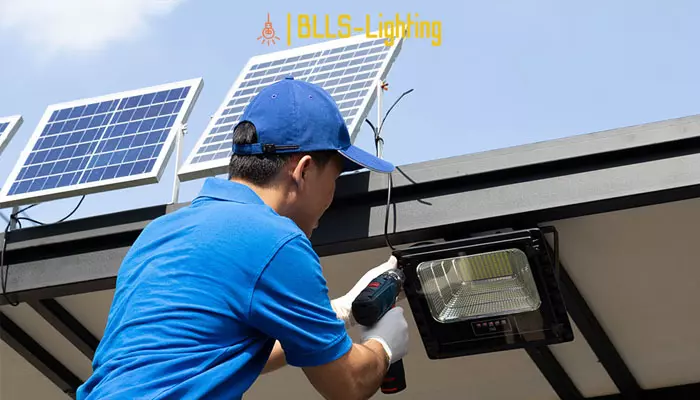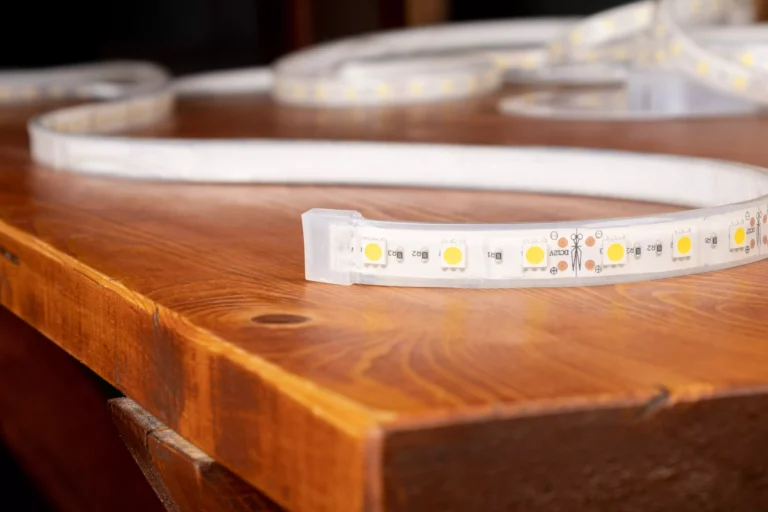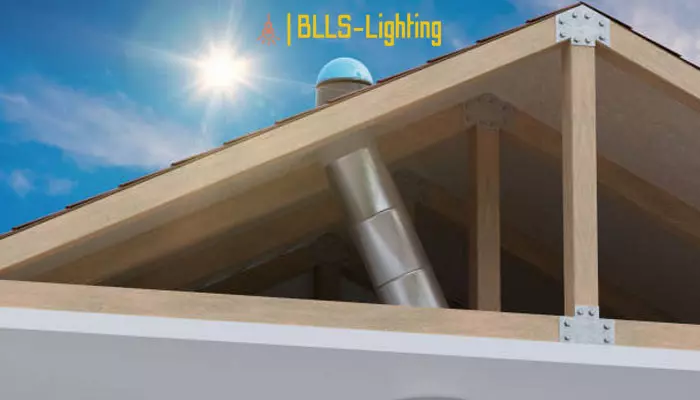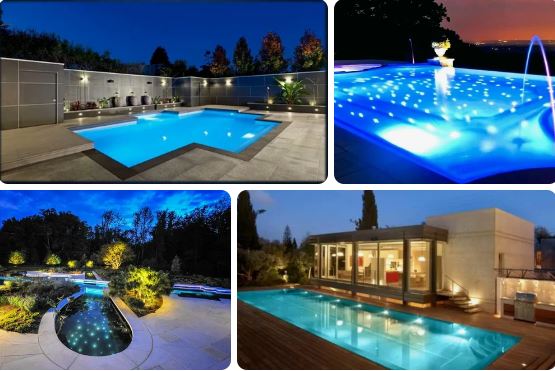Having spent years in the pool maintenance industry, I’ve encountered numerous instances where homeowners were daunted by the prospect of changing their pool lights. The task, often perceived as intricate due to the involvement of water and electricity, can indeed be intimidating. However, with the right guidance and precautions, it becomes a manageable and even rewarding DIY project.
Imagine a serene evening by the pool, the water gently lapping at the edges, but the light that once illuminated your nocturnal swims flickers out. This scenario is all too common and marks the beginning of a journey into pool light replacement. The process involves safely lowering the water level, ensuring the power is completely turned off, and carefully replacing the old fixture with a new one, all while adhering to safety standards to prevent any electrical hazards.
This introduction to how to change a pool light is designed for those who wish to reclaim their night swims under the serene glow of a well-lit pool. By following a step-by-step guide, homeowners can confidently tackle this task, ensuring their pool remains a safe and inviting oasis after sundown.

Preparing
Before embarking on the task of changing your pool light, it is crucial to prioritize safety and take a few preliminary steps. Firstly, identify the circuit breaker responsible for powering your pool light and ensure it is turned off. This precautionary measure is essential to prevent the risk of electrocution, especially if someone accidentally switches on the light or if an automatic timer activates it while you’re working on it.
Next, familiarize yourself with how your pool light housing is affixed to the pool’s wall. Typically, these housings are designed to be water-tight and secured with several underwater screws. In the case of older-style housings, you may encounter a component known as a wedge—a piece of plastic positioned between the light housing and the wall hole that accommodates the housing. If your housing employs a wedge, take note of its position and orientation during removal to streamline the re-installation process.
Lastly, determine the type of bulb required for your housing. This proactive step not only reduces the time the housing spends out of the water, minimizing the risk of debris contamination, but also helps avoid the potential hazards of electrocution and the drying out of the housing gasket. Prioritizing these preliminary considerations ensures a safe and efficient pool light replacement process.
Varieties of Swimming Pool Lighting
LED Pool Lighting
- Energy-efficient with significant cost savings
- Wide range of vibrant colors for customizable ambience
- Enhanced aesthetics and atmosphere creation
Halogen Pool Lighting
- Versatile for both above-ground and in-ground pool installations
- Consistent and reliable illumination throughout the pool
- Easy installation and replacement process
- Limited color availability, typically restricted to a standard white hue
Essential Supplies for Pool Light Replacement
Tools
- Multi-functional 6-in-1 screwdriver for various screw types
Materials
- Replacement bulb: Ensure compatibility with the existing pool light fixture
- Wedge kit: Required for secure bulb installation in certain models
- Housing gasket: Creates a watertight seal between the light fixture and pool wall
- Paper towels: For cleaning and absorbing excess moisture

How to Change a Pool Light: A Step-by-Step Guide
Step 1: Power Shutdown
To ensure safety, begin by turning off the circuit breaker that supplies electricity to the pool light. This critical step prevents electrical shock and potential injury.
Step 2: Remove the Pool Light Housing
Locate the screws that secure the pool light housing to the wall. Use a screwdriver to carefully unscrew them. Gently lift the housing out of the water and onto the deck. Check for buoyancy to determine if water has seeped into the housing. If the housing is intact, replace the gasket to prevent future leaks. If the housing is damaged, you will need to purchase a new one.
Step 3: Opening the Pool Light Housing
Once the housing is on the deck, unscrew the screw holding the lens collar in place. Inspect the gasket for any damage or wear. If the gasket is compromised, replace it to maintain watertightness.
Step 4: Replace the Bulb
Carefully remove the old bulb from the housing. Avoid touching the new bulb with bare hands, as oils from your skin can shorten its lifespan. Carefully install the new bulb into the socket.
Step 5: Re-Install the Housing
Reassemble the pool light housing by placing the lens and gasket back into place. Tighten the collar securely. Submerge the housing back into the water and position it in the wall. Finally, screw the housing into place, ensuring that the gasket is creating a watertight seal.
Below is a tutorial video on how to replace pool lights that you may find helpful:
When to Seek Professional Assistance
When tackling pool light replacement, it’s crucial to recognize situations where professional assistance is essential. Here are two instances that warrant reaching out to an electrician:
1. Unable to Locate Pool Light Breaker
If you’re unable to locate the breaker that controls power to the pool light, attempting to replace the bulb becomes hazardous. Live electrical wires pose a significant electrocution risk. Engage a qualified electrician to safely identify and switch off the breaker.
2. Corroded or Damaged Pool Light Housing
Upon removing the pool light, inspect the housing thoroughly. If you encounter significant corrosion or damage, it’s highly recommended to seek professional repair. Compromised housing may lead to water leakage, further electrical hazards, or reduced light output. Replacing the housing ensures long-term safety and optimal pool lighting performance.
What is the Cost of Replacing a Pool Light?

Breakdown of Pool Light Replacement Costs
Replacing pool lights typically costs around $625 per unit. However, several factors influence these costs, including the number of lights being replaced, the type of lighting chosen, and any labor expenses associated with the installation.
Varieties of Pool Lights and Their Costs
Various types of pool lights are available, each with its own cost range:
- Energy-efficient LED lights: These are the most popular choice due to their versatility, brightness, and low energy consumption. They typically cost between $700 and $1,500.
- Incandescent bulbs: Incandescent bulbs are less expensive than LEDs, ranging from $450 to $650. However, they are less efficient and have a shorter lifespan.
- Fiber optic lights: Fiber optic lights are the most expensive option, costing between $1,300 and $1,700. They were once popular but have been largely replaced by LEDs due to their superior performance.
Determining the Quantity of Pool Lights Required
Pool lights are generally replaced individually as they burn out. Each light typically incurs a cost of approximately $625.
Labor Costs for Pool Light Replacement
Professional labor for pool light replacement typically costs between $50 and $100 per hour. Due to the presence of electrical components and water, it is highly recommended to seek professional assistance for safety reasons.
LED Pool Light Replacement Costs
LED pool lights initially cost more than other types, but their long lifespan (20,000-30,000 hours) and energy efficiency lead to significant long-term savings. This makes them a cost-effective choice in the long run.
Fiber Optic Pool Light Replacement Expenses
Fiber optic pool lights create a soft, ambient glow and have a moderate lifespan (3-7 years). Replacing a fiber optic fixture costs between $1,300 and $1,700, while replacing a bulb ranges from $20 to $60.
Incandescent Pool Light Replacement Costs
Incandescent pool lights are the most cost-effective upfront but come with a shorter lifespan (1,000-5,000 hours) and higher energy consumption. This higher energy usage results in increased costs over time, making incandescent lights less cost-efficient in the long run.
Additional Costs of Pool Light Replacement
Replacing a pool light can involve additional expenses beyond the cost of the new fixture. The electrical wiring may need to be updated to accommodate the new light, which can drive up the total cost.
Modifying Existing Pool Wiring
If the existing pool wiring is not compatible with the new light, an electrician may need to make modifications. These modifications typically incur costs for electrician labor, building permits, and electrical inspections.
Pool Maintenance Expenses
Pool maintenance encompasses various expenses that contribute to the overall cost of pool ownership. These expenses include electricity costs to power the pool light, cleaning services to maintain the light’s functionality, and other maintenance expenses.
Pool Light Repair Expenses
When pool lights malfunction, repair expenses can accumulate. These expenses include labor costs for technicians to diagnose and fix the issue, as well as the cost of materials such as gaskets or bulbs.
Comparing the Cost of DIY Pool Light Replacement to Professional Services
DIY Pool Light Replacement Costs
Replacing a pool light yourself can save you money, with estimated costs ranging from $100-$500 for both the light and bulb. If you only need to replace the bulb, the cost drops to $20-$100. However, DIY replacement requires basic tools and electrical knowledge.
Professional Pool Light Replacement Costs
For a more secure option, professional pool light replacement costs around $625 per light. This service provides peace of mind by eliminating electrical risks and ensures proper installation for swimmer safety. Additionally, a professional inspection of the wiring is included.
Safety Considerations
Working with electricity in a pool poses a significant electric shock hazard. It’s crucial to prioritize safety by enlisting the services of a qualified pool repair professional. They possess the expertise and experience to ensure a safe and successful pool light replacement.
Saving on Pool Light Replacement Costs
The price tag associated with replacing pool lights may cause some to experience sticker shock, especially when compared to the cost of standard indoor light bulbs. Despite the higher cost attributed to added safety features in pool lights, there are still ways to economize on replacements with a few practical tips.

1. Cost-Saving Strategies
- Consider bulk discounts: Purchasing multiple pool lights from equipment companies can significantly reduce costs.
- Shop during off-season: Fall and winter promotions often offer reduced prices on pool lights.
2. The Benefits of LED Lighting
- Enhanced longevity: LED lights boast a lifespan of up to 10 years, minimizing replacement frequency.
- Energy efficiency: LEDs consume less energy than traditional bulbs, resulting in long-term savings on utility bills.
3. Bulb Replacement vs. Unit Replacement
- Bulb replacement: For fixtures in good condition, replacing only the bulb can save money compared to replacing the entire unit.
- Fixture replacement: When fixtures are damaged or deteriorated, replacing the entire unit is necessary.
4. Repair or Replace: Making an Informed Decision
- Gasket replacement: If the pool light’s gasket needs replacing but the fixture is otherwise intact, repairing the gasket may be a cost-effective option.
- Repair costs: Pool light repairs generally range from $65 to $150, while replacement costs can reach $625.
FAQ
How to change a pool light without draining the water?
To change a pool light without draining the water, you can use a specialized pool light fixture that allows for underwater bulb replacement. Ensure the electricity is turned off, use proper tools to open the fixture, and carefully replace the bulb while submerged. Always follow safety precautions and consult a professional if needed.
Is it possible for electricians to replace pool lights?
When the need arises to replace an old or malfunctioning pool light, hiring a local electrician can be a practical solution. Collaborating with an electrician is beneficial for pool light replacements, particularly when there is a requirement to repair or update existing wiring or install new wiring for additional pool lights. This ensures a safe and expert handling of electrical components in the pool area.
Is it feasible to underwater pool light replacement?
Addressing concerns about handling pool lights or wiring in a water-filled pool is understandable. Fortunately, both pool lights and swimming pools are designed to facilitate a safe and straightforward process for replacing lights without the need to drain the water. As a safety precaution, turn off the electricity to the pool, unscrew the pool fixture, pull it up and out to the side of the pool, and then proceed to change the bulb. This method ensures a secure replacement process without compromising the water level in the pool.
How frequently should pool lights be replaced?
The frequency at which pool lights need replacement varies depending on the type, with their design ensuring a considerable lifespan before replacement is necessary. LED bulbs boast the longest lifespan, lasting approximately 20,000 to 30,000 hours. In contrast, incandescent bulbs have the shortest lifespan, typically around 1,000 to 5,000 hours. Fiber optic pool lights fall in between, lasting around 6,000 hours.
Are pool lights safe?
Pool lights are intentionally designed with safety in mind, aiming to protect swimmers from the risk of electrocution. They feature waterproof fixtures and seals to prevent any contact between the electrical components and the water.
While the risk of electrocution from pool lights is generally low, it is not entirely impossible. Faulty wiring or damaged lighting equipment can compromise the safety of the lights. Therefore, it is crucial to promptly replace lights as needed and seek the expertise of an electrician for regular inspections and potential wiring upgrades to ensure a safe swimming environment.
What makes pool lights costly?
Pool light replacements tend to be pricier when compared to other pool components such as pump motors or standard indoor light bulbs. The elevated cost is attributed to the specialized design and construction of pool lights, incorporating components that prioritize swimmer safety. The light fixture and its surrounding parts, which safeguard the bulb, must be meticulously crafted to be waterproof, tightly sealed, and resistant to extreme temperatures. These safety features contribute to the higher overall expense of pool lights.
References: https://hayward.com/media/akeneo_connector/asset_files/0/9/092499_RevA_cef0.pdf








